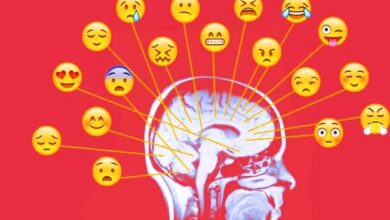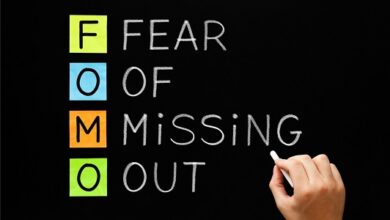What is Applied behavior analysis with features concepts measurement
Applied behavior analysis (ABA), also called behavior engineering , is a scientific discipline concerned with applying empirical techniques based on learning principles to change socially significant behavior . It is the applied form of behavior analysis;
The other two forms are radical behaviorism (or philosophy of science ) and experimental analysis of behavior (or basic experimental research ).
The name “applied behavior analysis” has replaced behavior modification because the latter approach suggested trying to change behavior without clarifying the relevant interactions between the behavior and the environment. In contrast, ABA attempts to change behavior by first evaluating the functional relationship between a specific behavior and the environment.
Additionally, the approach often seeks to develop socially acceptable alternatives to aberrational behaviors.
Features
The 1968 article by Baer, Wolf, and Risley is still used as the standard description of ABA. List the following seven characteristics of ABA.
- Applied: ABA focuses on the social meaning of the behavior studied. For example, a non-applied researcher may study eating behavior because this research helps to clarify metabolic processes, whereas an applied researcher may study eating behavior in people who eat too little or too much, trying to change that behavior to be more acceptable to the people involved.
- Behavior: ABA is pragmatic; asks how it is possible to get an individual to do something effectively. To answer this question, the behavior itself must be objectively measured. Verbal descriptions are treated as behavior itself, and not as a substitute for the behavior described.
- Analytical: Behavior analysis is successful when the analyst understands and can manipulate the events that control objective behavior . This may be relatively easy to do in the laboratory, where a researcher can stage the relevant events, but it is not always easy or ethical in an applied situation. Baer et al.
- Outline two methods that can be used in applied settings to demonstrate control while maintaining ethical standards. These are the inversion design and the multiple baseline design. In the investment design, the experimenter first measures the choice behavior, introduces an intervention, and then measures the behavior again.
- The intervention is then removed or reduced, and the behavior is measured once more. The intervention is effective to the extent that behavior changes and then changes again in response to these manipulations. The multiple baseline method can be used for behaviors that seem irreversible.
- Here, several behaviors are measured and then the intervention is applied to each one in turn. The effectiveness of the intervention is revealed by changes in the behavior to which the intervention is applied.
- Technological: The description of the analytical investigation must be clear and detailed, so that it can be repeated accurately by any competent researcher. Cooper et al. Describe a good way to check this: have a person trained in applied behavior analysis read the description, and then act out the procedure in detail.
- If the person makes a mistake or has to ask a question, then the description needs to be improved.
- Conceptually systematic: Behavior analysis should not simply produce a list of effective interventions. Rather, to the extent possible, these methods should be based on behavioral principles. This is aided by the use of theoretically meaningful terms, such as ‘ secondary reinforcement ‘ or ‘error-free discrimination’, as appropriate.
- Effective – Although analytical methods must be theoretically based, they must be effective. If an intervention does not produce a large enough effect for practical use, then the analysis has failed.
- Generality: Behavior analysts should aim for interventions that are generally applicable; The methods should work in different settings, apply to more than one specific behavior, and have long-lasting effects.
Concepts
Behaviour
Behavior refers to the movement of some part of an organism that changes some aspect of the environment . Often the term behavior refers to a class of responses that share physical dimensions or functions, and in that case a response is a single instance of that behavior.
If a response group has the same function, this group can be called a response class. “Repertoire” refers to the various responses available to an individual; the term can refer to responses that are relevant to a particular situation, or it can refer to everything a person can do.
Operant conditioning
Operative behavior is so-called “voluntary” behavior that is responsive to or controlled by its consequences. Specifically, operant conditioning refers to the three-term contingency that stimulus control uses, particularly an antecedent contingency called a discriminative stimulus (DE) that influences the strengthening or weakening of behavior through consequences such as reinforcement or punishment . .
The term is used quite broadly, from reaching for a candy bar, to turning up the heat to escape an aversive chill, to studying for a test to get good grades.
Respondent (classical) conditioning
Respondent (classical) conditioning is based on innate stimulus-response relationships called reflexes. In his famous experiments with dogs, Pavlov usually used the salivary reflex, that is, salivation (unconditioned response) after the taste of food (unconditioned stimulus).
Pairing a neutral stimulus, for example, a bell (conditioned stimulus) with food caused the bell to elicit salivation (conditioned response). Thus, in classical conditioning, the conditioned stimulus becomes a signal for a biologically significant consequence.
Note that in respondent conditioning, unlike operant conditioning, the response does not produce a reinforcer or punishment (for example, the dog does not get food because it salivates).
environment _
The environment is the entire constellation of stimuli in which an organism exists. This includes events both inside and outside of an organism, but only actual physical events are included. A stimulus is a “change of energy that affects an organism through its receptor cells.”
A stimulus can be described:
- Topographically by its physical characteristics.
- Temporarily when it happens.
- Functionally by its effect on behavior.
Reinforcement
Reinforcement is the key element in operant conditioning and in most behavior change programs. It is the process by which behavior is strengthened. If a behavior is closely followed by a stimulus and this results in an increase in the future frequency of that behavior, then the stimulus is a positive reinforcer.
If removing an event serves as a reinforcement, this is called negative reinforcement. There are multiple reinforcement schedules that affect the future probability of behavior.
Punishment
Punishment is a process by which a consequence immediately follows a behavior that decreases the future frequency of that behavior. As with reinforcement, a stimulus can be added (positive punishment) or removed (negative punishment). Generally speaking, there are three types of punishment:
Presentation of aversive stimuli (eg, pain ), response cost (removal of desirable stimuli as in monetary fines), and restriction of freedom (as in a ” time out”). Punishment in practice can often lead to unwanted side effects. Some other possible unwanted effects include resentment of being punished, attempts to escape punishment, expression of pain and negative emotions associated with it, and recognition by the punished individual between the punishment and the person applying it.
Extinction
Extinction is the technical term to describe the procedure of withholding/discontinuing reinforcement of a previously reinforced behavior, resulting in the lessening of that behavior. The behavior is set to go extinct (Cooper et al.). Suppression procedures are often preferred over punishment procedures, as many punishment procedures are considered unethical and are prohibited in many states.
However, extinguishing procedures must be implemented with the utmost care by professionals, as they are usually associated with extinguishing explosions. An extinction burst is the temporary increase in the frequency, intensity, and/or duration of extinction-directed behavior. Other characteristics of an extinction burst include extinction-produced aggression:
The occurrence of an emotional response to an extinction procedure that often manifests as aggression; and b) variability of the response induced by extinction: the appearance of novel behaviors that normally did not occur before the extinction procedure. These novel behaviors are a central component of shaping procedures.
behavior measurement
When measuring behavior, there are two dimensions of behavior and quantifiable measures of behavior. In applied behavior analysis, the quantifiable measures are a derivative of the dimensions. These dimensions are repeatability, temporal extension, and temporal locus.
repeatability
The response classes occur repeatedly over time, that is, how many times the behavior occurs.
- The count is the number of occurrences in the behavior.
- Frequency / frequency is the number of behavior instances per unit of time.
- The holding is the measure of how the rate changes over time.
temporary extension
This dimension indicates that each behavior instance occupies a certain amount of time, that is, how long the behavior lasts.
- Duration is the period of time during which the behavior occurs.
temporal locus
Each instance of behavior occurs at a specific point in time, that is, when the behavior occurs.
- Response latency is the measure of the time elapsed between the onset of a stimulus and the onset of the response.
- Response time is the amount of time that occurs between two consecutive instances of a response class.
derived measures
Derived measures are not related to specific dimensions:
- Percentage is the ratio formed by combining the same dimensional quantities.
- Criterion tests are the number of response opportunities required to achieve a predetermined level of performance.



